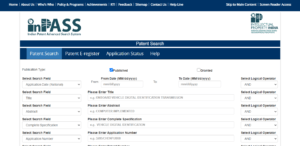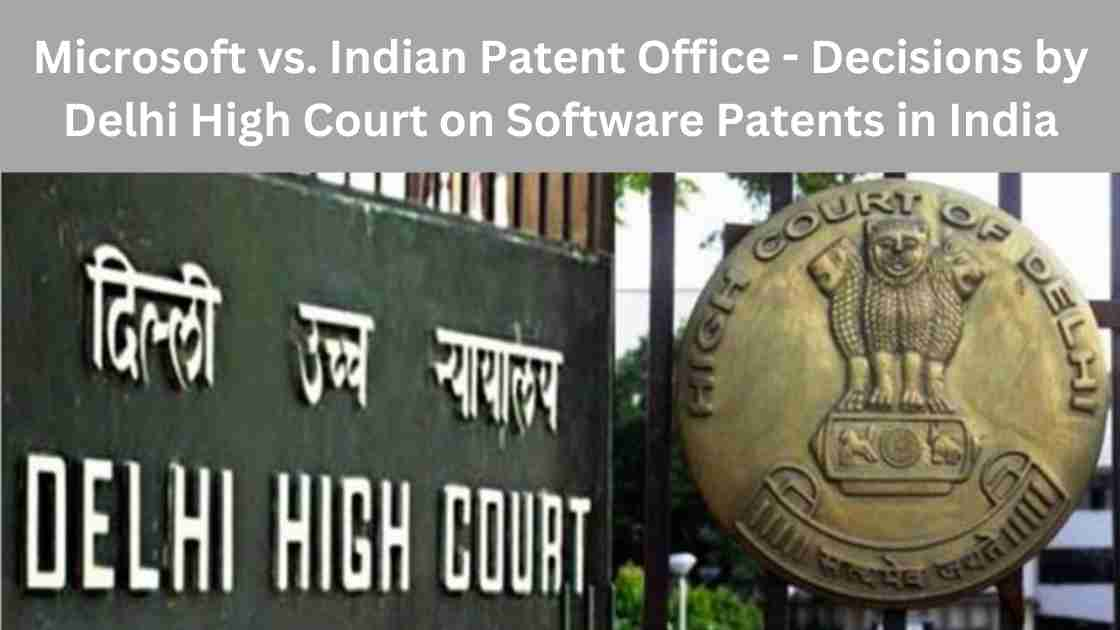
Indian Patent Search
Any decision-making process involves due diligence of some kind before such decisions are made since a bad decision may not attain the same results for which such decisions are taken in the first place. As an inventor, you must be aware that the same logic holds true even in decisions relating to patent filing for your invention. You might be wondering what sort of due diligence is required before filing a patent for your invention. Here, one of the main due diligence is in the form of conducting a patent search to validate if your invention is novel/new. If you are an inventor based in India, naturally, you may be eager to conduct an Indian Patent Search to validate your invention.
If you are already having a fair idea about what can be patented and what types of inventions can be patented, you would be knowing that the patent search is conducted in the backdrop of all the available information in the public domain throughout the world. If you would like to quickly read about basics of patent, you may refer to our articles titled ‘What kind of inventions can be patented’ here, “Type of Patent Applications” here and “What is a Patent” here.
In this article, we will be focusing on how to conduct Indian Patent Search using the free patent database provided by the Indian Patent Office. Before, we explore the steps for conducting the Indian Patent Search, let us first understand what are the important types of patent search?.
Types of Patent Search
Based on the specific requirements at hand, different types of patent search can be carried out. For instance, if you would like to understand if your invention is novel or new then a ‘patentability search’ is carried out. Then a ‘freedom-to-operate’ search can be carried out to identify any liability relating to infringement if you are making or selling any product. If you are faced with a patent infringement, then you may opt for conducting an ‘invalidity search’ to identify any prior art or information which you can use for invalidating the patent being enforced.
Patentability Patent Search
As briefly explained above, the patentability patent search is done to find out any existing information or prior art which is available in the public domain that might be similar to your invention. It becomes crucial to conduct a patentability patent search to find out if any existing prior art might pose threat to your chances of securing a patent grant. The information uncovered from the patentability patent search can be used for better drafting of the patent claims to avoid your invention unintentionally claiming the same invention in a broad manner i.e., the patent drafter upon knowing the existence of the prior art, can focus more specifically on the inventiveness of your invention to steer clear of any overlaps that may mis-guide the patent examiner to raise objection under novelty or inventive step.
Freedom-to-Operate Patent Search
In an ever-competitive ecosystem, before launching any product into the market, it is advisable to conduct a freedom-to-operate patent search to identify if your product infringes any existing patents in the country. Based on the outcome of the freedom-to-operate patent search, you may not initiate any investments in developing such product which might find itself infringing on the existing patent or look for patent licensing opportunities from the owner of the existing patent.
Invalidity Patent Search
The invalidity patent search is mainly conducted to verify the validity of the patent or strength of the patent. The scenario wherein carrying out the invalidity patent search becomes important is when you are faced with an infringement and you want to explore the options to invalid the patent which is being enforced. In such cases, if the invalidity patent search reveals any information or prior-art which may have been overlooked or missed out by the examiner at the time of prosecution then you can successfully challenge validity of such patents in defense against any infringement action or legal suits.
Further as a patent owner, before initiating any enforcement action you may also want to determine the strength of your own patent to verify if any information can be used for invalidating your patent.
State-of-the-art or Patent Landscape Search
The state-of-the-art or the patent landscape search allows someone to find out the existing patents in a particular field of technology and understand the kind of technological developments taking place in such field of technology. Some of the reasons for conducting the state-of-the-art or the patent landscape search is for identifying the existing technology and space for new technological developments to address unmet needs. It also allows you to understand the key market players in the field and the technologies they are working on and in turn allows you to plan for investments in research and development in a strategic manner.
Patent Search Strategies

As a beginner, you may think the process of patent search is similar to any search conducted over online. For instance, conducting literature survey, google search and other journal databases. While, the basic search technique adopted for such search process may still yield relevant results, it might not be always helpful or efficient in finding the relevant prior-art in the patent search. As a result, it recommended that you combine various patent search strategies to get best results.
Keyword Search Strategy
One of the first patent search strategy is keyword search strategy, as the name denotes this search involves using relevant keywords for searching on the patent search database. For a better search result, it is advisable to determine the keyword by taking into consideration of the factors such as what is the invention, what are the problems and solutions that it offers, identifying the most relevant keywords and identifying the synonyms of the keywords before starting the keyword search process.
Almost all patent search databases allow for a simple keyword search and provides results based on the matching keywords. You must be aware that since the inventors or patent drafter may use different terms or words for the same keyword you might be searching, the guarantee of finding such patent documents with different terms can be difficult. Therefore, it is always recommended that the keyword search strategy be combined with the other patent search strategies explained below as well.
Patent Classification Search Strategy
To provide accessibility of patent documents in an efficient way, the patent classifications play an important role. As you may have understood that how keyword search strategy is not always helpful if the patent document uses different keyword to refer to the same information which you might be searching. As a result, it is natural that we classify the patent documents based on various categories. These categories may range from a broad field of technology to a specific sub-domain in that field.
For instance, an invention relating to playing music in a mobile phone can be classified as ‘Electricity > Electric Communication Device > Telephonic Communication > playing music files’. Further each category is represented by a classification code and the same varies based on the patent classification system being used.
The patent classification systems in use are International Patent Classification (IPC) system, it is administered by the World Intellectual Property Organization (WIPO). Then another major classification in place is Cooperative Patent Classification (CPC), which is jointly provided by the United States Patent and Trademark Office (USPTO) and European Patent Office (EPO).
Specific Dates or Date Range
The patent search can also be combined with any specific date to filter out inventions that be considered as a prior art. For instance, if the priority date of the application is 01st January 2022, it makes sense to restrict the search to documents which are published before the priority dates. Also, all the patent search databases also allow for a date range to selected.
Patent References
You can also retrieve a specific patent by searching references such as publication numbers and patent numbers. The search by publication number is one of the popular options since patent number is not issued until after the patent is granted or issued.
Assignee/Inventor Names
Sometimes, you may be interested in finding out the patents being filed a by a particular company or entity. In such cases, the patent search databases allow for performing search by providing the assignee names. Generally, such search retrieves all the patent applications of the assignee from the patent databases to which it has access to. Likewise, the patent search databases also allows for the search to be conducted using the inventor’s name.
Search Techniques

Based on the patent search database being used, there are certain techniques which are recommended by such patent search database tools. Generally, they include use of:
- Boolean Operators such as ‘AND, OR, and NOT;
- Adjacent or Proximity Operators to find out words that may occur within certain proximity of one another;
- Truncations to find out various versions of a word with an alternative endings or spellings;
- Phrases search as the name implies searching for a particular phrase or word combinations;
- Nesting is a technique to use parenthesis () for more than one type Boolean operators in a search, it allow for combining multiple search queries in a single search;
How to Conduct Indian Patent Search

If you are interested in using the patent search database provided by the Indian Patent Office, you can access the same here. You should be aware that the patent search database provided by the Indian Patent Office covers only the applications filed with the Indian Patent Office.
The origin of the patent applications being filed in front of the Indian Patent Office can be categorized into ordinary, conventional and national phase applications. The ordinary applications are nothing but the applications originating from India and filed first with the Indian Patent Office. The conventional applications are those filed first in a different conventional country and then filed in India within 12months of the priority date. The national phase applications are the applications which are filed through the Patent Cooperation Treaty (PCT) route.
The patent database of Indian Patent Office provides access to all these three types of published applications. The database provides three types of searches that includes:
- Patent Search for published and granted patents;
- Patent E-Register search;
- Application Status Search;
Patent Search for Published and Granted Patents
This patent search option can be used for finding patents published and granted by using various search parameters provided.
Broadly, the search parameters for using the patent database of Indian Patent Office are straight forward and they include the publication status, search field, query and Boolean operators. Please refer to the table below for additional information of the same.
| Publication Status | Published or Granted You can click on either of these to shortlist the applications. You may note the option of published also includes granted patents. |
| Date Range | You can select the date range, if you are looking for patents from a specific time period. These date range includes: · Application Date; · Publication Date; · Date of Grant; · Priority Date; |
| Search Filed | The search field provides the options for specific search requirements, they include: · Title; · Abstract; · Complete Specification; · Application Number; · Publication Number; · Patent Number; · Applicant Name; · Applicant Country; · Applicant Address; · Inventor Name; · Inventor Country; · Filing Office; · International Patent Classification; · PCT Application Number; · PCT Publication Number;
Based on any of the above search field that you select, you can enter the query for the same with or without Boolean operators to get the results. |
Patent E-Register Search
The Patent E-Register search provided by the Indian Patent Office allows for retrieving the granted patents using the patent number. The patent number is generated once the patent is granted and the same can be used for retrieving a specific granted patent. The search result would then display all the details of that specific granted patent including the validity details of the patent.
Application Status Search
The application status search provided by the Indian Patent Office allows for searching for a patent application using its application number and it allows you to access all the public documents such as patent specification, drawings, priority details, first examination report and other prosecution documents.
Search Syntax
The Indian Patent Search using the patent database by the Indian Patent Office allows for search syntax comprising “*” and “~”. The Asterisk sign represents zero, one, or multiple characters and the tilde sign represents a single character.
For additional information on how to use the search syntax in Indian Patent Search, you can refer to the example usage provided by the Indian Patent Office here.
Free Patent Databases for Global Patent Search
Having understood various aspects of patent search, you might be also interested in knowing about the free patent databases which are available for performing patent search. They include:
Google Patents
Google provides a free patent search tool for performing patent search on patent applications filed with almost all the major patent offices around the world. The google patent search tool can retrieve documents of both granted patents and published patent applications from each of the patent office database available in public domain.
Espacenet
Espacenet is another free online patent search tool for both granted and published applications and this free patent search tool is provided by the European Patent Office. Espacenet offers its patent search tool in English as well as the national language of the member states of European Patent Organization.
Patentscope
The World Intellectual Property Organization (WIPO) also provides a free patent search database which provides access to the published patent applications filed under the Patent Co-operation Treaty (PCT) route. The Patentscope in addition to providing access to the published patent applications of PCT filings, also gives access to the national and regional patent offices around the world.
USPTO Patent Database
Since United States Patent and Trademark Office (USPTO) receives patent applications from almost all the applicants who intend to file a application outside their national offices, you may also consider using the free patent database search tool provided by the USPTO. It mainly provides options such as quick search, advanced search and patent number search for performing the patent search.
Freepatentsonline
The Freepatentsonline is another free patent search tool for predominantly patents filed in front of USPTO and other countries such as EPO, Japan, etc. It provides access to the published as well as the granted patent documents.
Conclusion – Indian Patent Search
From the above article, you may have not only got an idea about the Indian Patent Search but more importantly the basics of Patent Search, Patent Search Strategies and Patent Search Techniques. We have seen that you can perform a basic patent search whether it is patentability patent search, freedom-to-operate patent search, invalidity patent search or state-of-the-art/landscape patent search. In alternate, perform a detailed search for any of these search type using advanced options such as combining the keywords with patent classification systems, date ranges, inventor/assignee names, or patent references with or without patent search techniques.
We hope the above information allows you to perform your own due diligence before taking a decision on filing a patent free of cost. Should you need any professional help in conducting a patent search for any of your requirements, you can always get in touch with us for a free consultation here or write to us at admin@acuraip.com.



Recent FAQs Published by the Indian Patent Office on Form 27
The Indian Patent Office recently released a comprehensive FAQ document…

A Comprehensive Guide to Patent Searches: Types, Examples, and When to Use Them
Patent searches are a crucial aspect of the patenting process.…

Microsoft vs. Indian Patent Office – Decisions by Delhi High Court on Software Patents in India
The part of this series focuses on the…

Case in Point: Sun Pharma Ltd vs. DWD Pharma Ltd
Case in Point is a new series where…
Categories
Recent Discussions
Recent FAQs Published by the Indian Patent Office on Form 27
The Indian Patent Office recently released a comprehensive FAQ document regarding Form 27, aimed at clarifying the requirements and procedures for patentees and…
Recent Discussions
A Comprehensive Guide to Patent Searches: Types, Examples, and When to Use Them
Patent searches are a crucial aspect of the patenting process. Whether you're an inventor, entrepreneur, or a legal professional, understanding the different types…


